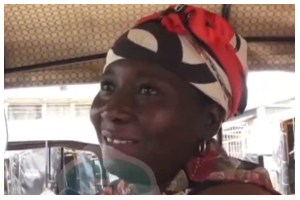On April 8 last year, Moses Onono, a livestock farmer and owner of Homa Farm in Omel A Village, Paicho Sub-county, Gulu City, woke up to the sight of cuttings in his fence as he went about his routine checks on the herd.
Inside the kraal, something was terribly wrong, 25 of his 38 exotic bulls were missing.
About 700 metres from the fence appeared fresh tyre marks of a truck that seemed to have made several turns and driven towards Gulu Town, concretising the assumption that the truck may have been used to move the missing cattle.
Confused and helpless, Onono started to make random calls to several people in and out of Gulu, including the Ministry of Agriculture (MAAIF) headquarters to find out about any certificates or permits that could have been issued to any dealer to move livestock from Paicho Sub-county.
“An officer from MAAIF asked me to immediately visit the veterinary office at Gulu to confirm that, fortunately, I was told at the district that a permit had been issued to some businessmen to go and ferry animals from Paicho. That was when I knew my cows had been stolen,” Onono says.
Although he doubted that none of his workers could have been involved in the theft, he was shocked to learn that a contact in the permit issued by the district veterinary department to move the animals out of Gulu was that of Robert Byaruhanga, a businessman to whom he supplied milk.
The arrest of the milkman aided the discovery of the truck used to ferry the animals from Gulu to Kampala, which had been hidden at Kigumba Town Council in Kiryandongo District and the subsequent arrest four other suspects.
The suspects were identified by police as Byruhanga, Samuel Kasasira, a resident of Lakweri village, Kalali parish, Paicho Sub County, and Wilson Kiiza, a meat dealer and a resident of Paicho sub-county.
Others were Fred Kiviri, a resident of Maganjo-Kagoma ward, Kawempe North Division, Kampala and Livingstone Talemwa, a cattle keeper and resident of Nikitooma Central, Nakasongola District.
Organised cartels
On August 13 last year, the five suspects were charged with stealing livestock.
The outcome of a telephone printout and investigations by police later pointed out that the five suspects had been communicating among themselves while plotting how to raid Homa Farm and take away the animals to Kampala.
Small-scale livestock farmers are the backbone of the country’s beef industry, but they find their livelihoods threatened by criminals who supply stolen beef to growing urban meat markets.
Criminal networks use advanced logistics and market information to inform their illicit activities. The crime is embedded in the wider business of cattle trade.
The raiders exploit weak coordination between security and the veterinary department, who are mandated to monitor the movement of animals in every district. Livestock is a much sought-after commodity among criminals, especially as the year ends due to the high demand for their products during festivities.
In Acholi Sub-region, the number of cases of stolen cattle between October and December 2019, doubled to nearly 460 from 213 cases registered between April and September 2019, according to Aswa River Region police.
Although statistics of livestock theft cases for 2020 were not yet out by the time of filing this report, police predict that the figures could climb up significantly since the Covid-19-induced lockdown saw a rise in livestock theft.
The suspects usually sell the stolen animals to people who are desperately in need of meat for the festivities,” an officer attached to Aswa region’s CID office, who prefers anonymity, says.
According to the officer, police in the region have arrested more than 100 people for alleged livestock theft throughout the lockdown period.
“The suspects include meat dealers from Kampala, herdsmen employed within the region here, among others,” he says.
On Friday December 18 last year, the Gulu Magistrates’ Court presided over by Mr Francis Dawa heard that Byaruhanga and his co-accused broke into Homa Farm on April 7, 2020 and stole 25 heads of cattle valued at Shs70m.
The prosecution also stated that Byaruhanga was the lead contact in the theft since he allegedely coordinated and linked all the other accused persons to commit the offence through telephone.
“It is clear that Byaruhanga is a meat dealer but has no farm in Paicho. While Byrauhanga claims these were his own cattle, the evidence and his conduct shows otherwise. He had no evidence to show how he acquired these cattle,” Mr Mr Dawa stated.
Court also heard that Mr Byaruhanga bribed Gulu veterinary officials to aquire a movement permit to move cattle during the lockdown from Paicho where he had no cattle and that the officers did not verify the cattle that were to be moved by Mr Byaruhanga.
The court heard that the movements and telephone calls print outs of the five accused persons before, during and after the loss of Onono’s animals, confirmed that they plotted together to execute the crime.
In his ruling, Mr Matenga convicted and sentenced to five years in prison each of the five suspects and ordered them to jointly pay Onono Shs80m for the lost animals.
Jerome Angena, a senior state prosecutor, asked the court to slap a maximum sentence on the five suspects, whom he said several police records showed were operating a cartel that stole animals from Acholi region and sold them in Kampala.
“Much as the accused do not have any previous records of conviction but with the police, they have records that they have been involved in such crimes of stealing cattle in this region, this will serve as a lesson to other thieves,” he said.
This was not the first time livestock thieves were striking Homa Farm, Onono says. In July 2019, 10 heads of cattle were stolen from the same farm, nine months after an incident in which six cows disappeared from the same farm.
Despite reporting the two previous incidents to police at Paicho police post, investigations were done but no arrest has since been effected.
According to police, in Omel Sub-county (recently carved out of Paicho) alone, more than 500 heads of cattle have been stolen in the past two years.
Most of the cases are, however, usually settled at the sub-county level or at the nearby police outposts in the villages since the complainants and owners of the livestock fear to shoulder costs of court proceedings in case of litigation.
Where stolen animals end up
Once stolen, the animals are trafficked for sale to abattoirs in Kampala and neighbouring towns or moved for sale across the border in neighbouring countries such as South Sudan, DR Congo, Rwanda, Kenya and Tanzania.
At Kamdini revenue checkpoint in Oyam District, for example, findings indicate that stolen cattle are easily trafficked across Karuma Bridge, disguised as legal commodities.
Franco Ocopi, a cattle trader from Adjumani District, told Saturday Monitor recently that cattle trafficking is currently enabled by corrupt officials, who turn a blind eye once bribed or choose to collaborate with the criminals.
“An officer will simply ask you to declare the number of animals without moving to the ground to verify the animals. Upon paying for the permit, they will ask you for Shs200,000 and they will decline to come with you to the loading point,” Mr Ocopi said.
There are areas that have faced this as a perpetual problem, with livestock raiders coming from different communities and across the borders.
Thieves usually come under the cover of night darkness, especially when it rains. Some come during the day when the livestock tenders are away.
Because the government lacks specific laws requiring one to show the source of the animals at slaughterhouses, the butchered meat easily enters the legitimate market. Some thieves often slaughter the animals and pack the meat in saloon cars, while others take away the live animals.
In June last year, President Museveni, during the Heroes Day celebration in Luweero District, ordered investigations into the rampant livestock theft in the area.
The matter was brought to his attention by Edris Sseddunga, the chairperson of the Uganda War Veterans Association, who claimed that veterans who invested their compensation packages into livestock production were reaping losses due to the theft of the animals.
At the time, records showed that up to 60 heads of cattle had been stolen in Nakasongola District alone between January and June from the areas of Nabiswera, Nakitoma and Lwabyata, among others.
A later meeting in June led by former deputy Inspector General of Police, Maj Gen Sabiiti Muzeeyi in Lweero District, heard that cattle theft persisted in the region due to failure by the government to adapt to the threat, enabling the vice to explode into crime cartels.
Cattle farming in Uganda
In Uganda, cattle is the most important source of meat and milk, with the country producing more than 200 metric tonnes of beef and more than 1.5 billion litres of milk per year (UBOS, 2015).
More than a quarter of the total Uganda population partly or fully depends on cattle for their livelihoods.
Despite cattle contributing to household livelihoods through the provision of food, including mainly milk and meat, livestock theft has become an organised crime, which the country seems to be poorly equipped to deal with.
Livestock theft has been commercialised by criminal networks throughout the country, an issue that undermines development and progress among the farming communities both in rural and urban settlements.
In Karamoja Sub-region, Stella Atyang, the Moroto Woman MP attributed the current surge cattle raids in the region to the increase in cattle trade.
“We need to rise to the challenge and deal with livestock theft in a more critical way since the danger is real. The Local Defence Unit, Uganda People’s Defence Forces (UPDF) and the Anti-Stock Theft Unit (ASTU) deployment is not enough since the service is always unavailable to the many smallholder cattle keepers,” she said.
Maj Peter Mugisa, the UPDF 3rd Division spokesman, says the Turkana of Kenya arm the Matheniko of Moroto District and the Pokot of Kenya arm the Pokot of Uganda, while the Toposa of South Sudan arm the Jie of Kotido to raid animals.
Investigations conducted by this newspaper in August last year showed that different ethnic groups have also formed alliances and steal livestock from each other.
The ethnic groups in Karamoja Sub-region include Matheniko (Moroto), Bokora (Napak), Dodoth (Kaabong), Jie (Kotido), Labwor (Abim), Pokot (Amudat) and Pian (Nakapiripirit).
Between 2001 and 2010, the government carried out disarmament in Karamoja region where some 40,000 illegal arms were recovered.
Between January and September last year, Maj Mugisa says the UPDF recovered 68 guns, 195 cattle rustlers were killed and 293 arrested.
Africa News of Saturday, 30 January 2021
Source: monitor.co.ug













